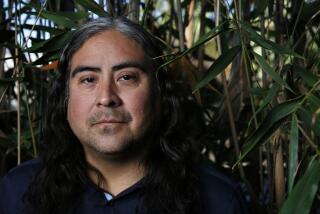A Great Night for Hearing Voices
- Share via
COSTA MESA — Johann Sebastian Bach’s Mass in B minor, finished just a year before his death and never performed in its entirety during his lifetime, is a compendium of choral treatments that reflects a lifetime of mastery and stands as a towering statement that inspired future generations.
Bach reworked portions of earlier pieces for it, finished the Kyrie and Gloria in 1733 and completed the remainder about 1749. The Lutheran composer tied himself to time-honored Christian tradition by setting the complete Roman Catholic Mass ordinary and by building two sections on Gregorian melodies. He paused for intimate solos, touchingly offset by instrumental obbligatos, but he relied on the chorus to bear the vocal brunt of this demanding testament of faith.
Saturday night, at the Orange County Performing Arts Center, the Pacific Chorale met Bach’s tough requirements. Led by John Alexander and sturdily anchored by members of the Pacific Symphony and accompanist Lori Loftus, who played a discrete continuo on the Abbot and Sieker organ, the chorale offered a vibrant affirmation, with few glimpses of exhaustion.
Throughout the Mass, Alexander exacted energy and power--eliciting intricate passages with clear unanimity--and held back the choir to create hushed, sustained moments of sorrow and supplication. The singers illuminated the structures of the great fugues with clarity, precision and rhythmic animation.
Soprano Virginia Sublett and mezzo-soprano Martha Jane Weaver proved an elegant and complementary duo. In solos, Weaver traversed dangerous terrain with aplomb in the “Laudamus te” and brought dark-toned pleading to the Agnus Dei. Joyce Kelley, on oboe d’amore, imitated steadfastly during Weaver’s aria “Qui sedes ad dextram.”
Mark J. Goodrich used his discreet tenor with intelligence and sensitivity that was seconded by flutist Louise Di Tullio during the Benedictus. Despite noble underpinning by hornist Mark Adams, Thomas Jones’ moderate, well-trained baritone was swallowed by the orchestra in the elaborate solo for “Quoniam tu solus Sanctus,” but fared better with the light instrumentation at “Et in Spiritum Sanctum.”
Trumpets, led by principal Andrew Ulyate imparted clarion heralding for the resurrection and bright jubilation during the Sanctus.
More to Read
The biggest entertainment stories
Get our big stories about Hollywood, film, television, music, arts, culture and more right in your inbox as soon as they publish.
You may occasionally receive promotional content from the Los Angeles Times.










